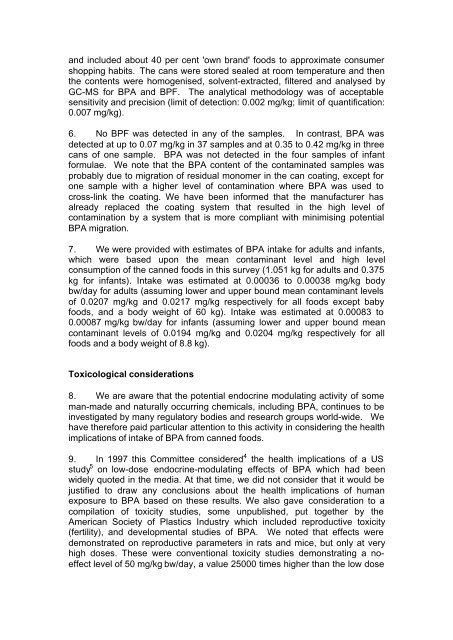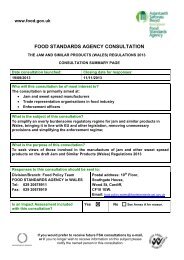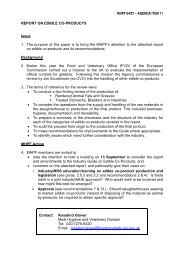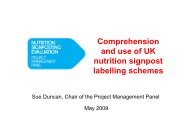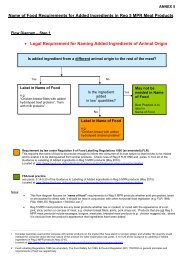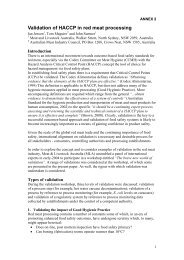COT Bisphenols pdf - Food Standards Agency
COT Bisphenols pdf - Food Standards Agency
COT Bisphenols pdf - Food Standards Agency
Create successful ePaper yourself
Turn your PDF publications into a flip-book with our unique Google optimized e-Paper software.
and included about 40 per cent 'own brand' foods to approximate consumer<br />
shopping habits. The cans were stored sealed at room temperature and then<br />
the contents were homogenised, solvent-extracted, filtered and analysed by<br />
GC-MS for BPA and BPF. The analytical methodology was of acceptable<br />
sensitivity and precision (limit of detection: 0.002 mg/kg; limit of quantification:<br />
0.007 mg/kg).<br />
6. No BPF was detected in any of the samples. In contrast, BPA was<br />
detected at up to 0.07 mg/kg in 37 samples and at 0.35 to 0.42 mg/kg in three<br />
cans of one sample. BPA was not detected in the four samples of infant<br />
formulae. We note that the BPA content of the contaminated samples was<br />
probably due to migration of residual monomer in the can coating, except for<br />
one sample with a higher level of contamination where BPA was used to<br />
cross-link the coating. We have been informed that the manufacturer has<br />
already replaced the coating system that resulted in the high level of<br />
contamination by a system that is more compliant with minimising potential<br />
BPA migration.<br />
7. We were provided with estimates of BPA intake for adults and infants,<br />
which were based upon the mean contaminant level and high level<br />
consumption of the canned foods in this survey (1.051 kg for adults and 0.375<br />
kg for infants). Intake was estimated at 0.00036 to 0.00038 mg/kg body<br />
bw/day for adults (assuming lower and upper bound mean contaminant levels<br />
of 0.0207 mg/kg and 0.0217 mg/kg respectively for all foods except baby<br />
foods, and a body weight of 60 kg). Intake was estimated at 0.00083 to<br />
0.00087 mg/kg bw/day for infants (assuming lower and upper bound mean<br />
contaminant levels of 0.0194 mg/kg and 0.0204 mg/kg respectively for all<br />
foods and a body weight of 8.8 kg).<br />
Toxicological considerations<br />
8. We are aware that the potential endocrine modulating activity of some<br />
man-made and naturally occurring chemicals, including BPA, continues to be<br />
investigated by many regulatory bodies and research groups world-wide. We<br />
have therefore paid particular attention to this activity in considering the health<br />
implications of intake of BPA from canned foods.<br />
9. In 1997 this Committee considered 4 the health implications of a US<br />
study 5 on low-dose endocrine-modulating effects of BPA which had been<br />
widely quoted in the media. At that time, we did not consider that it would be<br />
justified to draw any conclusions about the health implications of human<br />
exposure to BPA based on these results. We also gave consideration to a<br />
compilation of toxicity studies, some unpublished, put together by the<br />
American Society of Plastics Industry which included reproductive toxicity<br />
(fertility), and developmental studies of BPA. We noted that effects were<br />
demonstrated on reproductive parameters in rats and mice, but only at very<br />
high doses. These were conventional toxicity studies demonstrating a noeffect<br />
level of 50 mg/kg bw/day, a value 25000 times higher than the low dose


